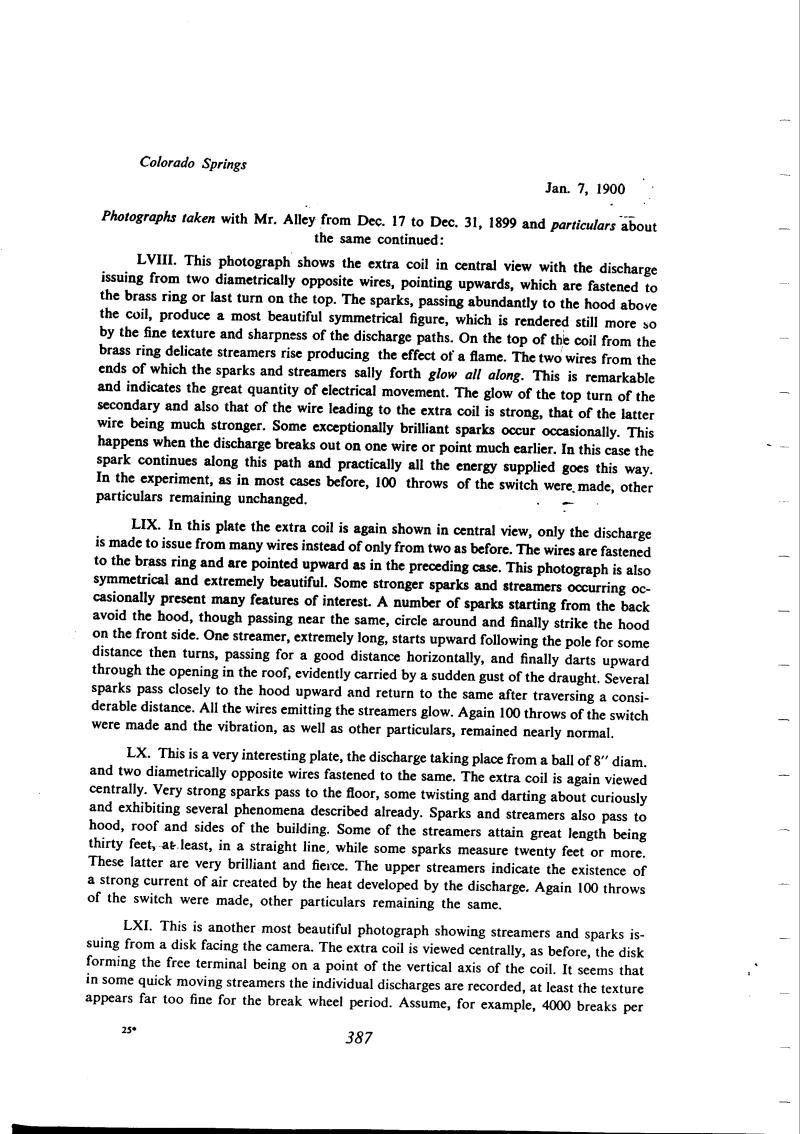
Nikola Tesla Books
Tesla: âMeans for generating electric currentsâ, U.S. Patent 514 168, Febr. 6, 1894, Appl. Aug. 2, 1893, P-225.
âMethod of regulating apparatus for producing currents of high frequencyâ, U.S. Patent 568 178, Sep. 22, 1896. Appl. June 20, 1896, P-228.
âApparatus for producing electric currents of high frequency and potentialâ, U.S. Patent 568 179, Sep. 22, 1896, Appl. April 22, 1896, P-233.
âMethod and aparatus for producing currents of high frequencyâ, U.S. Patent 568 179, Sep. 22, 1896, Appl. July 6, 1896, P-237.
âApparatus for producing electrical currents of high frequency", U.S. Patent, 568 180, Sep. 22, 1896, Appl. July 9, 1896, P-241.
âApparatus for producing electric currents of high frequency", U.S. Patent, 577 670, Feb. 23, 1897, Appl. Sep. 3, 1896, P-245.
âApparatus for producing currents of high frequency", U.S. Patent, 583 953, June 8, 1897, Appl. Oct. 19, 1896, P-249.
January 7
This is the last entry in the diary. Apart from the usual description of photographs, Tesla writes about experiments he intends to carry out on his return (where?). He qualifies the experiments to date as satisfactory, considering that his aim was âto perfect the apparatus and make general observationsâ. The apparatus which he was then envisaging for future experiments was to be an improved oscillator which would enable better results than any he had so far obtained.
January 7
Last day, along with the usual descriptions of photographs, he talks about future experiments after returning (where?).
About experiments performed until then, he says they were satisfactory based on the fact that his goal was the "apparatus improvement and the achievement of a general picture". Future apparatus about this he now thinks, will be an improved oscillator and it will enable the achievement of results better than all those until then. It is known that immediately after returning to New York (and according to news media he arrived in Feb., 1900), Tesla started to materialize the idea on "world radio station" and its construction started in 1901 on Long Island in the vicinity of New York. Tesla lacked the financial means, and the help of Morgan and others was not sufficient, and therefore Tesla was forced to discontinue the construction of such a station in 1905.

